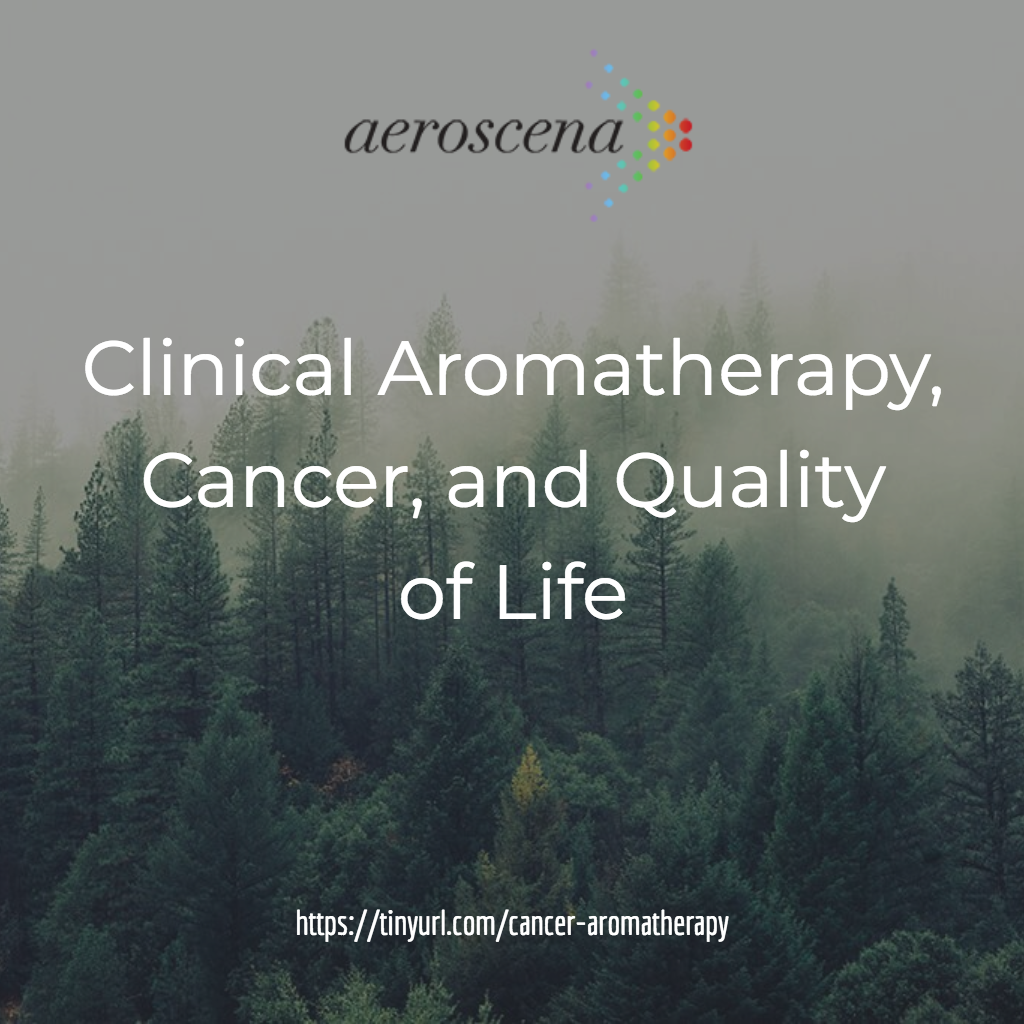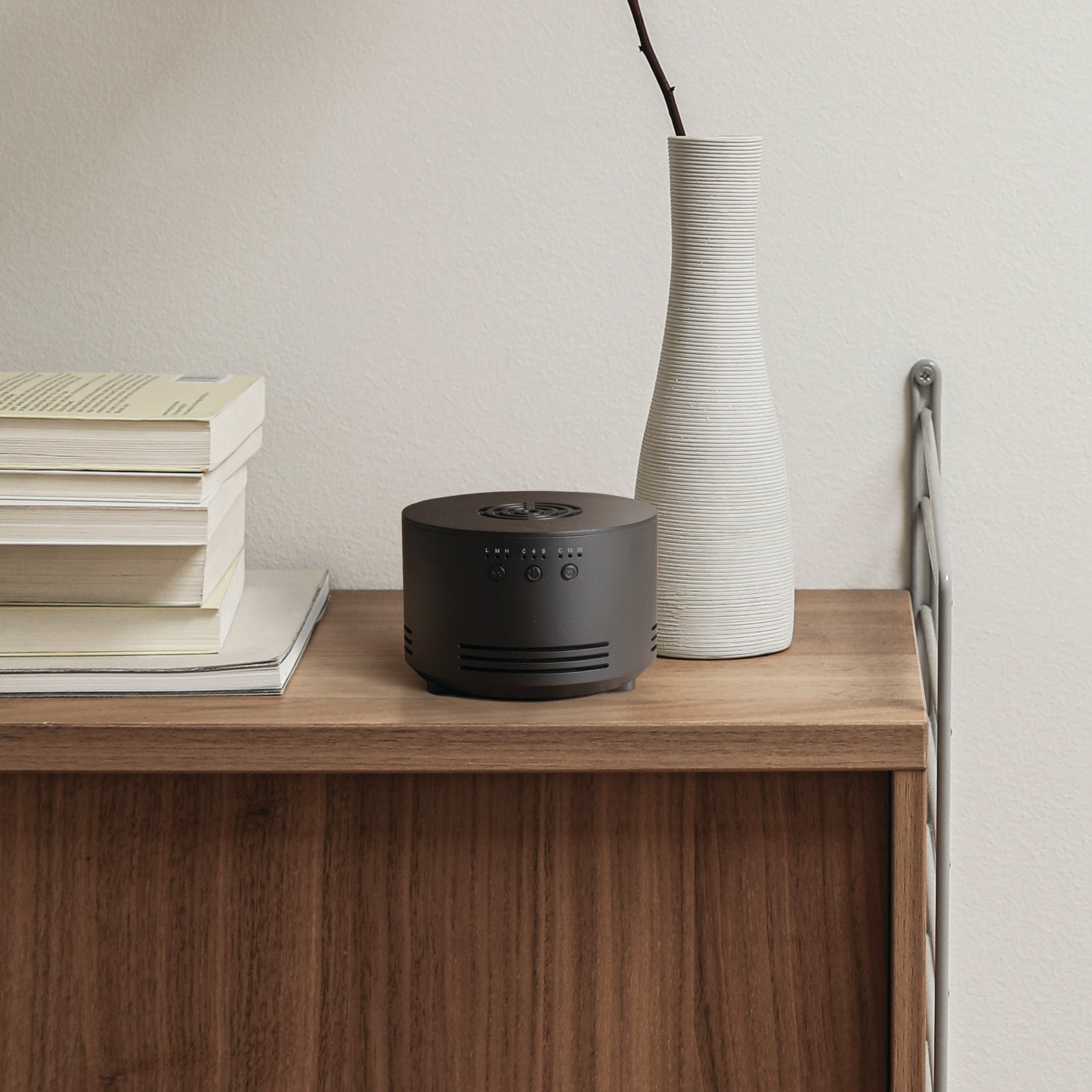
Clinical Aromatherapy, Cancer, and Quality of Life
Or, how to simply and safely help cancer treatment patients feel better.
In 2018, an estimated 1,735,350 million individuals are expected to be diagnosed with cancer in the United States. The majority of those diagnosed will undergo some form of cancer treatment — often chemotherapy or radiation — both of which come with a variety of side effects that affect quality of life nearly as much as the disease itself.
650,000 of those diagnosed in the U.S. will receive chemotherapy, and most will experience at least some of its common side effects, including nausea and vomiting, poor sleep quality, fatigue, decreased ability to concentrate, and mood changes. Not to mention the anxiety associated with simply having cancer; anxiety that is often shared with loved ones.
With so many cancer patients undergoing chemotherapy year after year, one would think that a range of accessible interventions would be available to help combat its deleterious side effects. However, other than a few anti-emetic drugs and benzodiazepines for anxiety and sleep, there isn’t much help for cancer patients outside of lifestyle modifications.
This is why forward-thinking members of the medical establishment have been looking for ways to positively impact cancer patient care and improve quality of life for those undergoing treatment. One of the options being more and more commonly adopted is clinical aromatherapy; a science that has been making its way into standard practice primarily via nurses and caregivers, often at their own expense.
While some clinicians may scoff at the idea of aromatherapy as an ineffective “new age” treatment modality, in truth the use of essential oils as an adjunct therapy has been and continues to be given serious consideration as part of clinical studies for a range of medical issues. This includes its use to mitigate common side effects of chemotherapy, including nausea, stress, fatigue, insomnia, and “chemo brain,” otherwise known as difficulty concentrating.
For instance, a 1999 palliative care study (1) examined the effect of the addition of essential oils to massage therapy on patients receiving massage and found that aromatherapy improved physical and psychological symptoms, as well as overall quality of life.
Another study looked at the use of aromatherapy (2) for the reduction of anxiety for patients with malignant brain tumors. There was a statistically significant reduction in all four physical markers of anxiety, which suggests that aromatherapy positively affects the autonomic nervous system, inducing the relaxation response.
In 2015, researchers studied the use of ginger aromatherapy (3) on cancer patients experiencing nausea. A statistically significant change from baseline for global health status (P<0.001) was detected after ginger essential oil inhalation, and a clinically relevant 10 points improvement on role functioning (P=0.002) and appetite loss (P<0.001) were also documented while patients were on ginger essential oil.
Still more research has examined other facets of cancer patient experience that may be made less onerous via the use of aromatherapy. For example, a 2017 study (4) found that there was a statistically significant reduction in self-reported anxiety with the use of lavender-sandalwood aromatherapy during image-guided breast biopsy. Another 2017 study (5) demonstrated lavender inhalation to be an effective technique to relieve pain related to needle insertion into an implantable central venous port catheter for those receiving chemotherapy.
There are many other aromatherapy studies being carried out currently, including several in which Aeroscena is fortunate to play a part. In fact, the ongoing accumulation of scientific evidence around aromatherapy’s efficacy has already led major U.S. cancer centers to adopt its use due to its positive effects on patients. Given the few effective options to comfort cancer patients during treatment, it shouldn’t come as a surprise that even the most respected medical institutions are now willing to suspend preconceptions of aromatherapy in order to provide comfort to those under their care.
(1) Wilkinson S, Aldridge J, Salmon I, et al.: An evaluation of aromatherapy massage in palliative care. Palliat Med 13 (5): 409–17, 1999. [PubMed] [Reference list]
(2) Hadfield N: The role of aromatherapy massage in reducing anxiety in patients with malignant brain tumours. Int J Palliat Nurs 7 (6): 279–85, 2001. [PubMed] [Reference list]
(3) Hadfield N: The role of aromatherapy massage in reducing anxiety in patients with malignant brain tumours. Int J Palliat Nurs 7 (6): 279–85, 2001. [PubMed] [Reference list]
(4) Trambert R, Kowalski MO, Wu B, et al.: A Randomized Controlled Trial Provides Evidence to Support Aromatherapy to Minimize Anxiety in Women Undergoing Breast Biopsy. Worldviews Evid Based Nurs 14 (5): 394–402, 2017. [PubMed] [Reference list]
(5) Yayla EM, Ozdemir L: Effect of Inhalation Aromatherapy on Procedural Pain and Anxiety After Needle Insertion Into an Implantable Central Venous Port Catheter: A Quasi-Randomized Controlled Pilot Study. Cancer Nurs : , 2017. [PubMed] [Reference list]








Leave a comment
This site is protected by hCaptcha and the hCaptcha Privacy Policy and Terms of Service apply.